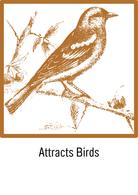Ficus microcarpa
- Iva Indo Tropical Plant
- May 20, 2024
- 2 min read
Updated: Aug 18
This tree is popular in many tropical and subtropical regions for its dense green leaves and beautiful shape, as well as its use in a variety of landscape and horticultural applications.

Scientific Name : Ficus microcarpa
Family : Moraceae
Common Name : Chinese Banyan, Malayan Banyan, Indian Laurel, Curtain Fig, Gajumaru, Laurel Fig, Small-Fruited Fig, 榕树, 马来亚榕
CLASSIFICATIONS AND CHARACTERISTICS
Plant Growth Form : Tree
Lifespan (in Indonesia) : Perennial
BIOGEOGRAPHY
Native Distribution : Indonesia, Malaysia, Sri Lanka, India, Papua New Guinea, Taiwan, Thailand, southern China, and northern Australia.
Native Habitat : Terrestrial (Primary Rainforest, Secondary Rainforest, Monsoon Forest, Coastal Forest, Freshwater Swamp Forest, Riverine, Disturbed Area / Open Ground).
DESCRIPTION AND ETHNOBOTANY
Growth Form
Ficus microcarpa can grow into a large tree reaching a height of 15-25 meters (50-82 feet). This tree has a thick trunk and can produce aerial roots hanging from its branches.
Foliage
Ficus microcarpa has dense and shiny leaves, with oval or egg-shaped leaves. The leaves are dark green, the edges are flat or wavy.
Flowers
Ficus microcarpa flowers have funnel-shaped petals with a green color.
Fruit
The fruit is small and round (macrocarpa means "small fruit" in Latin), green when young, and turning purple or black when ripe.
Habitat
It grows abundantly in tropical and subtropical rainforests, and is often found in cities as an ornamental or shade plant.
LANDSCAPING FEATURES
Desirable Plant Features : Ornamental Fruits
Landscape Uses : General, Parks & Gardens, Coastal, Hedge / Screening, Topiary, Suitable for Bonsai.
FAUNA, POLLINATION AND DISPERSAL
Fauna Pollination : Attracts Bird (Fruits) and Attracts Butterfly.
Dispersal Associated
Fauna
PLANT CARE AND PROPAGATION
Light Preference : Full Sun, Semi-Shade
Water Preference : Moderate Water
Plant Growth Rate : Moderate
Ready to turn your outdoor space into your a dream garden?
From design to build, we create landscapes that fit your style and lifestyle. Let’s bring your dream garden to life!
















